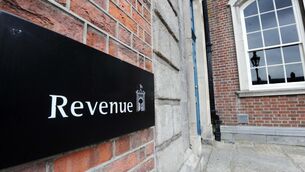Waiting times for tests keep insurance costs high for young drivers

The first and second lockdowns have had a serious impact on driving test waiting times. More than 85,000 people are currently waiting for a driving test, with the average wait time hovering at nearly eight months, up from six weeks on average in pre-crisis times.
Driver testing was suspended in March, and was not resumed until 29 June — and then only for certain categories of vehicles.
Testing restarted across the board from 20 July. Even then however, testers were only carrying out five examinations per day up to 14 September, when the figure was increased to six.
Before the lockdown, examiners typically carried out eight tests each day on average.
Online insurance brokers Coverinaclick say that because tests have been limited to essential workers since the start of the second lockdown, the backlog is going to get significantly worse.
They believe that the wait time could hit 12 months by early next year, and warn that that delays to driving tests will mean thousands of provisional license drivers will be forced to renew insurance policies which cost way more than a fully licensed driver would pay.
Based on the waiting times, they may have to repeat this for a second year if a solution is not found.
Deirdre McCarthy of Coverinaclick.ie points out that drivers who pass their test are typically rewarded with premium reductions of between €300 and €600 at their next renewal.
"Unfortunately, for the 50,000 plus drivers who would likely have passed their test between March and October, and the others who will now have their test cancelled, a significant number will not see these reductions if their insurance renewal date arrives before their test date.
"But many drivers are simply unaware of this, so we are advising them to check the insurers refund policy in this regard before renewing, and to subsequently flag it with their insurer as soon as they have passed their test."
She suggests that driving instructors be given teacher-certify style powers to enable drivers to demonstrate their proficiency on the road and receive a full licence.
While it might not be possible to roll this initiative out across the board, as most of the 85,000 on the waiting list will have already completed their driver training, it could be trialled on the 24,000 plus drivers on the Essential Driver Training (EDT) wait list.

"This list is mostly made of young drivers who are already paying high prices for their insurance. These drivers have not yet completed the 12 lessons, but are in the process of doing so with a view to then taking their test.
"We are suggesting that approved driving instructors, who have been categorised as essential workers for this lockdown, could be asked to complete a detailed assessment after each of the 12 lessons."
"They would then submit this assessment, on a confidential basis, to the RSA, stating whether they believe that the person is fully competent. The RSA could then consider their report and decide whether to grant that person a full licence. According to the RSA, the current pass rate for those taking the driving test is 55.2%, so we would expect the pass rate for this process to be similar."
Deirdre acknowledges that her solution is not ideal, but suggests that a calculated grade system may be one of very few feasible options to tackle a problem that is only going to get worse.
"The RSA has already stated how difficult it is to apply the necessary Covid protocols in the driving test environment and it is widely accepted that these protocols will be in place for at least another six months," she said.
By some estimates, going from a provisional to a full license can reduce insurance premiums by anything from 30% to 80%. If that option is closed off by the pandemic, there are still things young drivers can do to get their premiums down.
Getting named driver experience has a significant influence on the price a young driver will pay. While most insurers will insist on a full year of this, some providers offer discounts to young drivers who have six months’ experience on a parent’s policy.
Look at the model and engine size of the car you intend to buy.
You may also have to pay more if your car is imported or if there are more theft claims on that particular model. Don’t be afraid to ask for quotes for several different cars.
Check the differences between third party fire and theft and comprehensive, according to the value of the vehicle.
If you want to teach your teenager to drive, cost out the various alternatives, and note that adding them to you or your spouse’s cover may not always be cheaper than arranging separate cover for them. Remember that some insurance companies specialising in insuring young drivers are only available through a broker.
A word of warning. ‘Fronting’, as it’s known, is a practise the insurance companies are wise to, and it won’t work. This is where the parent takes out insurance on what is essentially their son’s or daughter’s car in order to get a cheaper premium.
While insurers have a zero-tolerance approach to fronting, they will accommodate people if they want to name their daughter/son on their main car to gain some experience.
In addition to the particular conditions that relate to young drivers, there are of course the standard ways of reducing car insurance premiums.
When you’re renewing, pay close attention to who is named on the policy.
Forgetting to take a younger driver off a policy can result in paying over the odds by €500 or more. In some instances, however, actually adding a named driver can make your premium cheaper. Some insurers assume that if you add a partner with whom you live, that means you’re in a stable relationship and have a more benign risk profile.
The number of years of no claims bonus (NCB) is also important. A person with only one year’s NCB may only have been offered quotes from three or four insurers originally, but 12 months on, quite a few more will offer terms.
Most brokers will automatically run you through the system again to see what’s available. Drivers dealing directly with an insurer may fail to contact insurers that declined to quote last year. Make sure you do this.
If Covid has significantly and permanently reduced your time on the road, make that clear when looking for a quote.
The location at which the car is usually kept is usually factored into premium calculations. Also, whether or not your car is stored in a garage may be considered. If it is, some insurers will see this as lowering its security risk and may adjust the premium accordingly.
All the general factors that impact premiums (car type, age of insured, location of the car) are reviewed periodically by insurers and many will change their pricing structures for each. The same goes for insurers’ attitude to risk. This can change frequently and will vary too from insurer to insurer. The only way to get a firm handle on it is to ring around or talk to a broker you trust.











